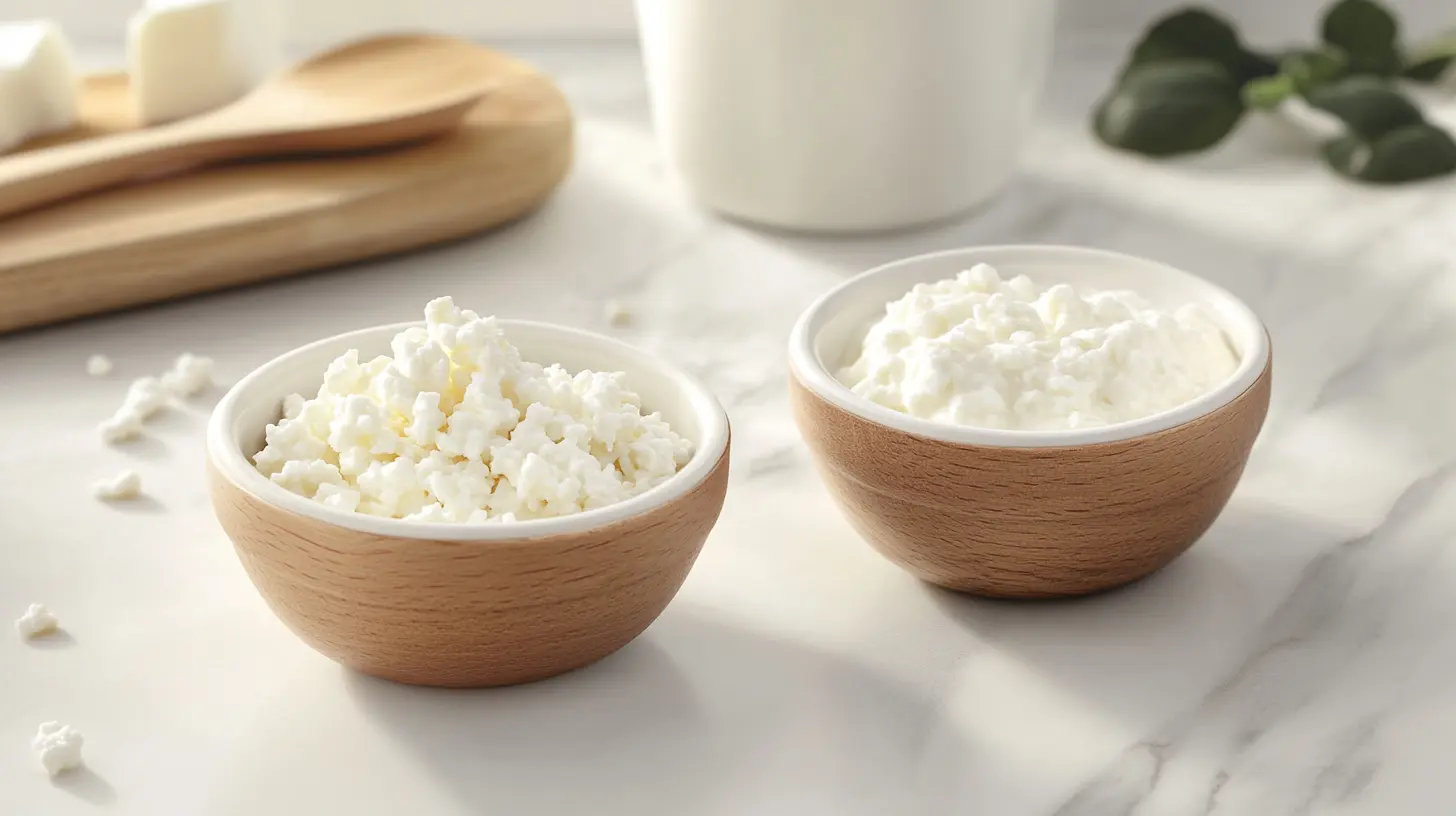Cottage cheese and curd are dairy favorites in kitchens worldwide. While they might seem similar at first glance, their differences in preparation, taste, and nutritional content make each unique.
Table of contents
What is Cottage Cheese?
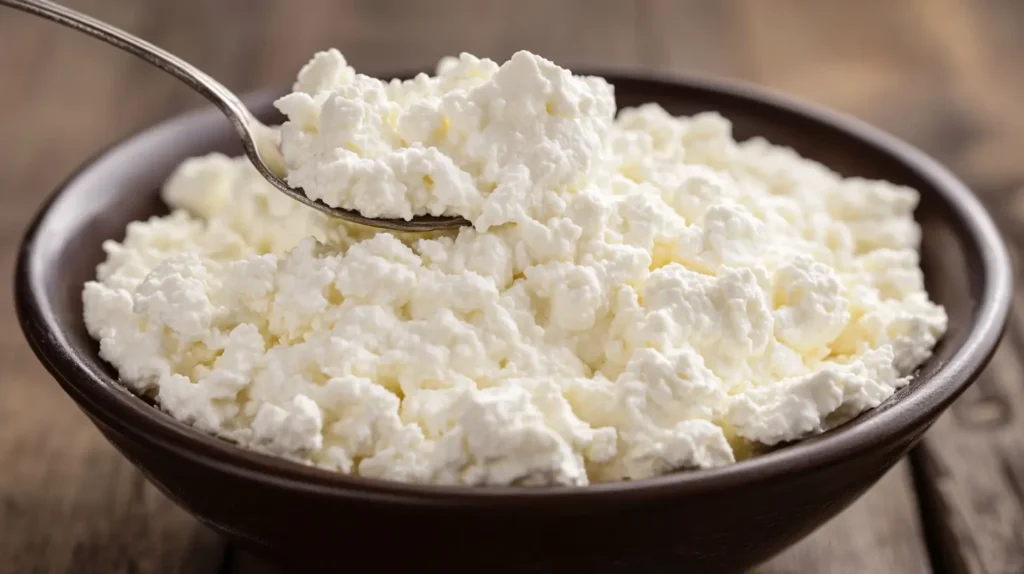
Cottage cheese is a fresh, mild cheese made by curdling milk with an acid like vinegar or lemon juice. The curds are drained but not pressed, retaining a soft and creamy texture. Its versatility makes it a popular ingredient in quick dinner ideas for two, such as pasta or salads, where its subtle flavor shines.
Nutritional Value
Rich in protein and low in fat, cottage cheese is an excellent choice for a healthy diet. Pair it with some gluten-free high-protein snacks for a balanced and fulfilling meal.
Which One Should You Choose?
The choice between cottage cheese and curd depends on your dietary needs and culinary preferences. Cottage cheese is high in protein and perfect for weight management, while curd provides probiotics for digestive health. Experiment with both to discover your favorite ways to enjoy these dairy delights.
How Cottage Cheese Is Made
The production of cottage cheese involves a relatively simple process:
- Acidification: An acid, such as vinegar or lemon juice, is added to milk to curdle it. Alternatively, rennet can be used to achieve this separation.
- Curdling: The milk solids (curds) begin to separate from the liquid (whey).
- Cooking: The curds are gently heated to firm them up and enhance their texture.
- Draining and Rinsing: Excess whey is drained, and the curds are rinsed to remove any residual acidity.
- Seasoning: Salt may be added to enhance flavor, and sometimes cream is mixed in for a richer consistency.
This simple yet precise process ensures the freshness and quality of cottage cheese. Its production often incorporates the curds and whey separation, a vital step shared with other dairy products, albeit with different end results.
Nutritional Composition of Cottage Cheese
Cottage cheese is packed with essential nutrients, making it a popular choice among health-conscious individuals.
- High Protein Content: It is a fantastic source of casein protein, aiding muscle repair and satiety.
- Low in Calories: Especially the low-fat versions, making it ideal for weight management.
- Rich in Micronutrients: It contains calcium, phosphorus, and B vitamins, which support bone health and metabolism.
For these reasons, cottage cheese often stands out in comparisons such as cottage cheese vs curd for fitness enthusiasts looking for a protein-packed alternative.
Curd Cottage Cheese
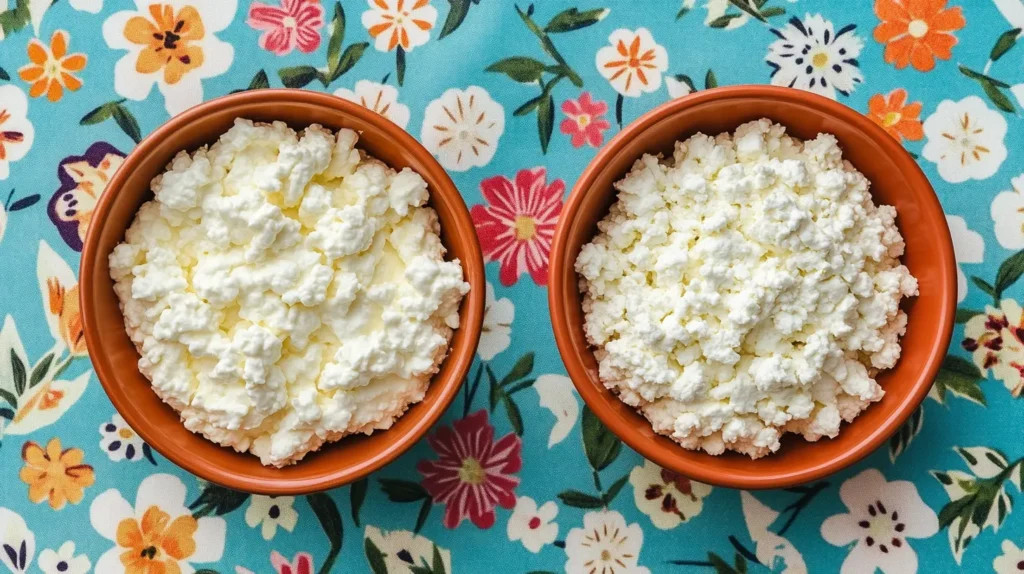
What is Curd?
Curd, often referred to as yogurt in some regions, is made by fermenting milk with beneficial bacteria. This process gives curd its tangy flavor and smooth consistency, making it a staple in dishes like goat curry or refreshing beverages.
Benefits of Curd
Curd is packed with probiotics that aid digestion and boost immunity. For those seeking alternative dairy recipes, Ninja Creami yogurt-based treats are a creative and delicious option.
What Is Curd Cottage Cheese?
Curd cottage cheese refers to the soft, moist curds that form the base of cottage cheese, drawing a connection between curd and the popular cheese product. While both curd and cottage cheese involve milk curdling, their preparation methods, textures, and culinary uses differ significantly. Let’s explore the relation between these two and how curd plays a vital role in making cottage cheese.
Relation Between Cottage Cheese and Curd
Curd is one of the essential steps in making cottage cheese. The curdling process separates milk into solid curds and liquid whey, which serves as the foundation for many dairy products, including cottage cheese. Here’s how they’re connected:
- Curd as a Base: The curds formed during the acidification of milk are similar to the initial product known as curd in many cuisines, especially in South Asia.
- Transformation into Cottage Cheese: In the next steps, these curds are cooked, drained, and sometimes mixed with cream to transform them into cottage cheese.
- Texture and Moisture: Cottage cheese curds retain more moisture compared to traditional curd, giving them a soft, lumpy consistency.
Although curd cottage cheese shares similarities with curd in its raw form, the final product is processed further for a creamier, more versatile cheese option.
Distinctions Between Curd Cottage Cheese and Regular Curd
While both curd and cottage cheese involve milk curdling, the two differ in several aspects:
- Cultural Origins:
- Curd: Often associated with Indian cuisine, curd is made by fermenting milk with a bacterial starter (such as yogurt culture).
- Cottage Cheese: A Western dairy product made by curdling milk with acids like vinegar or rennet.
- Production Process:
- Curd involves a fermentation process that imparts a tangy flavor and smooth consistency.
- Cottage cheese skips fermentation, focusing instead on separating curds and whey.
- Texture and Taste:
- Regular curd is smooth and creamy, often eaten as is or used as a base for dishes like raita or desserts.
- Cottage cheese is chunkier and milder, making it suitable for salads, dips, and spreads.
- Health Benefits:
- Curd is known for its probiotic properties, which promote gut health.
- Cottage cheese, being high in protein and calcium, is a favorite for weight management and muscle building.
These differences often lead to debates like cottage cheese vs curd in terms of nutritional value and uses, but both products have their unique benefits.
How to Use Curd Cottage Cheese
Curd cottage cheese can be utilized in many ways, blending the best of both worlds:
- In Salads: Its mild flavor pairs well with fresh vegetables and vinaigrettes.
- As a Spread: Mixed with herbs and spices, it becomes a creamy and nutritious spread for bread or crackers.
- In Desserts: Light cheesecakes or parfaits can be made using curd cottage cheese as a base.
- As a Protein Boost: Add it to smoothies or pair it with fruits for a post-workout snack.
Whether you’re exploring curds and whey vs cottage cheese or comparing regular curd to cottage cheese, understanding these distinctions is key to making the most of both dairy delights.
Cottage Cheese and Cheese Difference
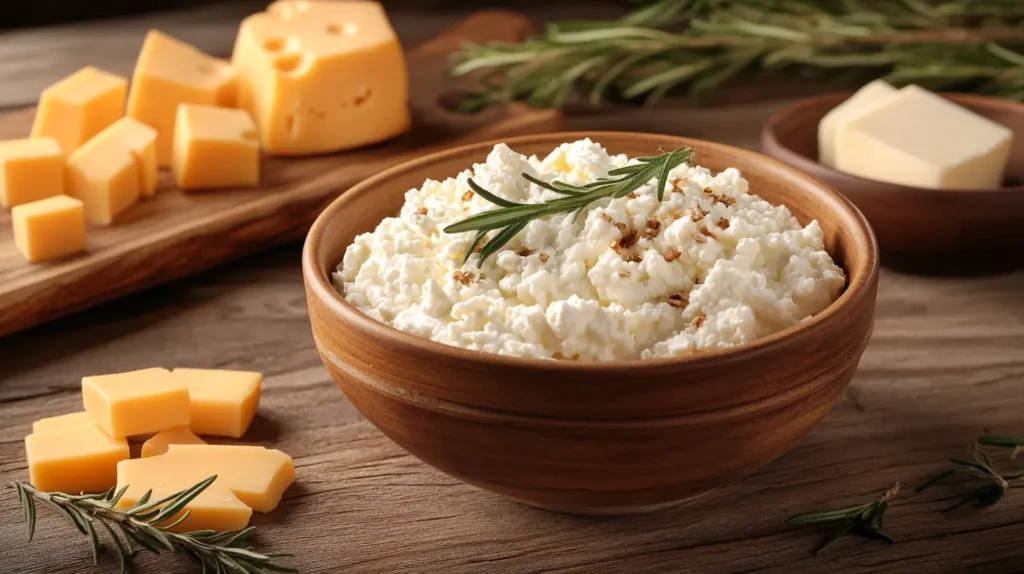
Although cottage cheese is technically a type of cheese, it stands apart from aged or processed varieties. From the way it is made to its flavor and nutritional profile, cottage cheese has unique qualities that distinguish it from other cheeses. Understanding these differences can help you choose the right type of cheese for your culinary and dietary needs.
Key Differences Between Cottage Cheese and Other Cheeses
- Production Process:
- Cottage Cheese: Made through a simple process of curdling milk and draining the whey without pressing or aging.
- Traditional Cheese: Typically involves pressing the curds, salting, and aging them for weeks to years, which enhances flavor and texture.
- Texture and Appearance:
- Cottage cheese has a moist, lumpy texture with visible curds.
- Other cheeses range from smooth and creamy (like cream cheese) to hard and crumbly (like Parmesan).
- Flavor Profile:
- Cottage cheese has a mild, slightly tangy flavor, making it versatile in both sweet and savory dishes.
- Aged cheeses often have bold, sharp, or nutty flavors due to the ripening process.
- Nutritional Composition:
- Cottage cheese is high in protein and low in fat (in reduced-fat varieties), making it a popular choice for fitness enthusiasts.
- Many aged cheeses are richer in fat and calories due to the cream used and the aging process.
Culinary Uses of Cottage Cheese vs Other Cheeses
The differences in texture and taste lead to distinct culinary applications:
- Cottage Cheese:
- Used in salads, dips, and smoothies.
- Ideal as a topping for fruits or toast.
- Works well in light desserts like cheesecakes.
- Aged or Processed Cheeses:
- Used for melting in pizzas, pasta, and sandwiches.
- Adds depth of flavor to gourmet dishes and sauces.
- Shredded or grated as a garnish for soups and salads.
Cottage cheese’s versatility often sparks curiosity in comparisons like cheese curds vs cottage cheese, highlighting its unique characteristics.
Why Cottage Cheese Is Different and Popular
- Freshness: Unlike traditional cheese, cottage cheese is not aged, which makes it a fresh and lighter option.
- Digestibility: Its simple production process results in a product that is easier to digest for many people compared to rich, aged cheeses.
- Health Focus: Cottage cheese is a go-to for weight watchers and athletes due to its low calorie and high protein profile.
These qualities often make cottage cheese the preferred choice in debates like cottage cheese vs curd for those seeking a healthy, versatile dairy product.
Exploring the Overlap: Curd Cottage Cheese vs Cheese
Curd cottage cheese, being a step between raw curd and finished cheese, blends some qualities of both. For instance:
- It shares the softness and mildness of fresh cheese but lacks the sharpness of aged varieties.
- Its curds resemble those found in traditional cheese curds, but with added cream for a smoother finish.
These distinctions and overlaps ensure that every dairy product has its own culinary and nutritional niche.
Cottage Cheese vs Curd
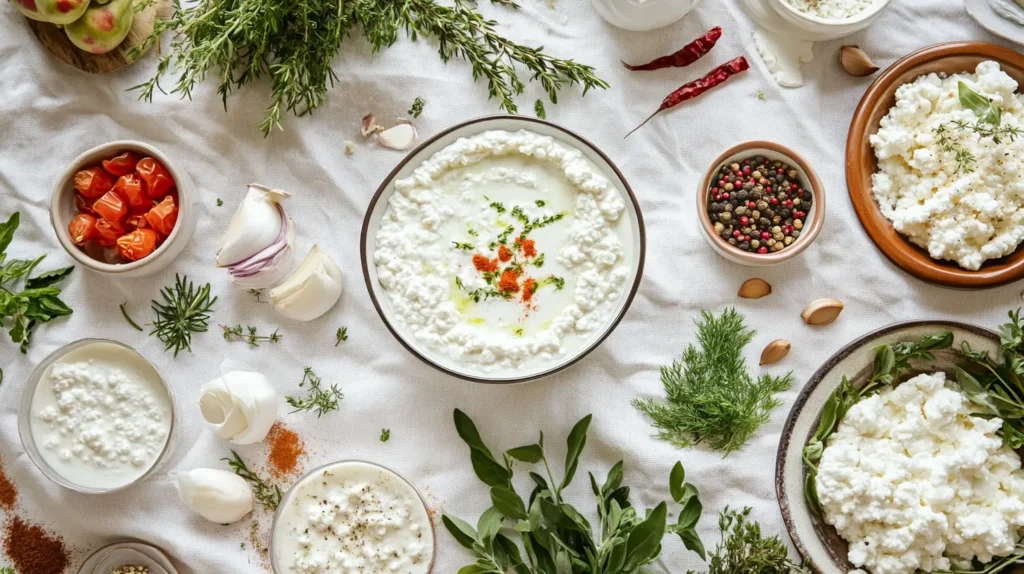
When comparing cottage cheese vs curd, it’s easy to see why they are often confused. Both are dairy products derived from milk, but they differ in preparation methods, flavor, texture, and nutritional profiles. Understanding their distinctions will help you use each product more effectively in your meals and appreciate their unique characteristics.
Core Contrasts Between Cottage Cheese and Curd
- Preparation Method:
- Cottage Cheese: Made by curdling milk using acid or rennet, followed by draining and sometimes adding cream. It skips fermentation, resulting in a fresh product.
- Curd: Created by adding a bacterial culture (usually a yogurt starter) to warm milk, leading to fermentation and a tangy flavor.
- Texture and Consistency:
- Cottage cheese is chunky and lumpy due to the separation of curds and whey.
- Curd has a smoother, creamier texture and does not contain visible curds.
- Flavor Profile:
- Cottage cheese has a mild, slightly tangy flavor, making it versatile for both savory and sweet dishes.
- Curd’s flavor is distinctly tangy due to the fermentation process, making it ideal for savory applications like raita or curries.
- Nutritional Differences:
- Cottage cheese is higher in protein, making it a popular choice for fitness enthusiasts.
- Curd is rich in probiotics, promoting gut health and digestion.
Cultural Perceptions of Cottage Cheese and Curd
- Cottage Cheese in the West:
- Known for its versatility, cottage cheese is a staple in Western diets, often consumed as a low-calorie, high-protein snack.
- It is widely used in salads, dips, and desserts.
- Curd in the East:
- In countries like India, curd is an everyday essential, used in meals, beverages (like lassi), and even skincare.
- It is considered a comfort food and a probiotic powerhouse.
- Overlapping Uses:
- Both products can be used interchangeably in some recipes, like smoothies or light spreads, but their distinct textures and flavors make them suited for different culinary traditions.
Choosing Between Cottage Cheese and Curd
Your choice between cottage cheese and curd largely depends on your dietary needs and the dish you’re preparing.
- Choose Cottage Cheese If You Want:
- High protein for muscle building or weight loss.
- A mild flavor that adapts well to diverse recipes.
- A low-fat option for health-conscious diets.
- Choose Curd If You Want:
- Probiotics for gut health and digestion.
- A tangy, fermented flavor for savory dishes.
- A smoother consistency that works well in curries and beverages.
The debate between cottage cheese vs curd is less about which is better and more about which suits your personal preferences and health goals.
Common Misconceptions About Cottage Cheese and Curd
- Are Cottage Cheese and Curd the Same?
No, they are different products. Cottage cheese is a fresh cheese made from curds, while curd is a fermented milk product. - Can Curd Replace Cottage Cheese in Recipes?
In some cases, like smoothies or light spreads, curd can be a substitute, but it lacks the chunky texture of cottage cheese. - Is One Healthier Than the Other?
Both are healthy but cater to different needs: cottage cheese for protein and curd for probiotics.
Curds and Whey vs Cottage Cheese & Cheese Curds vs Cottage Cheese
The phrase “curds and whey” often brings to mind nursery rhymes, but it plays a crucial role in understanding how dairy products like cottage cheese are made. Comparing curds and whey vs cottage cheese reveals how these elements transform into the creamy, lumpy delight we know as cottage cheese.
Understanding Curds and Whey
- What Are Curds and Whey?
- Curds: Solid lumps of milk proteins that form when milk is curdled.
- Whey: The liquid by-product left after the curds are separated.
- How They Are Made:
- Milk is acidified or treated with rennet, causing it to separate into curds and whey. This separation forms the basis for many dairy products, including cottage cheese, yogurt, and traditional cheeses.
- Role in Cottage Cheese Production:
- Cottage cheese consists of curds that have been drained and lightly processed. Unlike aged cheeses, it retains some whey for moisture and a mild flavor.
Curds and Whey vs Cottage Cheese: Key Differences
- Raw vs Processed:
- Curds and whey are the unprocessed result of milk curdling.
- Cottage cheese is the refined product, made by separating, cooking, and lightly seasoning the curds.
- Texture:
- Curds and whey have a raw, unstructured texture, while cottage cheese has a consistent, creamy quality.
- Culinary Use:
- Curds and whey are rarely eaten as is.
- Cottage cheese is a finished product, ready to eat or incorporate into recipes.
Understanding these distinctions highlights the steps that bridge raw ingredients to the final product in the debate of curds and whey vs cottage cheese.
Cheese Curds vs Cottage Cheese
Cheese curds and cottage cheese are often confused due to their shared curd origins. However, they are quite different in taste, texture, and usage. Let’s compare cheese curds vs cottage cheese to see how they stand apart.
Textural Differences
- Cottage Cheese:
- Soft, lumpy, and moist, with a creamy texture from the remaining whey.
- Easy to spread or blend into dishes.
- Cheese Curds:
- Firmer, squeaky, and more rubbery in texture, often eaten as a snack.
- Retains a more solid structure, ideal for frying or melting.
Flavor Profiles
- Cottage Cheese:
- Mild and slightly tangy, adapting well to both sweet and savory recipes.
- Cheese Curds:
- Tangier and saltier, delivering a bold flavor when eaten fresh.
Culinary Applications
- Cottage Cheese:
- Used in salads, dips, and desserts.
- Blends easily into smoothies or spreads.
- Cheese Curds:
- Popular in poutine, a Canadian dish featuring fries, cheese curds, and gravy.
- Fried or seasoned as a snack.
While both products share a common origin, their unique characteristics ensure each has its own place in the kitchen. This distinction often surfaces in comparisons like cheese curds cottage cheese, highlighting their roles in various cuisines.
Cheese Curds Cottage Cheese: The Overlap
Interestingly, both cheese curds and cottage cheese start from the same basic process: separating curds and whey. The difference lies in how they are treated afterward. Cottage cheese is softened, blended, and sometimes creamed, while cheese curds remain firmer and saltier.
These similarities and differences often lead to the question: “Can one replace the other?” While they share curd origins, their textures and flavors are too distinct for most recipes.
FAQs
1. What is the difference between curds and whey vs cottage cheese?
Curds and whey are the raw products of milk curdling, consisting of solid curds and liquid whey. Cottage cheese is made by refining the curds through cooking, draining, and sometimes adding cream, resulting in a soft, ready-to-eat product.
2. Is cottage cheese healthier than curd?
Both are healthy but serve different purposes. Cottage cheese is higher in protein and lower in carbs, making it ideal for fitness enthusiasts. Curd, with its probiotics, supports gut health and digestion.
3. Can cheese curds replace cottage cheese in recipes?
Cheese curds and cottage cheese are not ideal substitutes due to their differences in texture and flavor. Cottage cheese is creamy and mild, while cheese curds are firmer and saltier.
4. Are curd and cottage cheese interchangeable?
Curd and cottage cheese have different textures and flavors, so they are not easily interchangeable in recipes. Curd is smooth and tangy, while cottage cheese is chunky and mild.
5. How is curd cottage cheese prepared at home?
To prepare curd cottage cheese, curdle milk with lemon juice or vinegar. Drain the whey, rinse the curds, and add cream or salt for taste. This simple process creates a fresh, homemade version of cottage cheese.
6. Which is better for weight loss: cottage cheese or curd?
Cottage cheese is better for weight loss due to its high protein and low-fat content, which keeps you full longer. Curd, while also nutritious, is higher in carbs and may not provide the same satiety.
Conclusion
Cottage cheese and curd are both versatile and nutritious dairy products with unique properties. While cottage cheese stands out for its high protein content and creamy texture, curd offers probiotics and a tangy flavor, making each suitable for different diets and recipes.
Comparisons like cottage cheese vs curd, curds and whey vs cottage cheese, and cheese curds cottage cheese reveal how these products cater to diverse tastes and needs. Ultimately, choosing between them depends on your dietary goals and culinary preferences.
By understanding their distinctions, you can make informed choices and enjoy the best of both in your meals. Whether you’re adding cottage cheese to a salad or incorporating curd into a traditional dish, these dairy delights promise to enrich your culinary experience.

